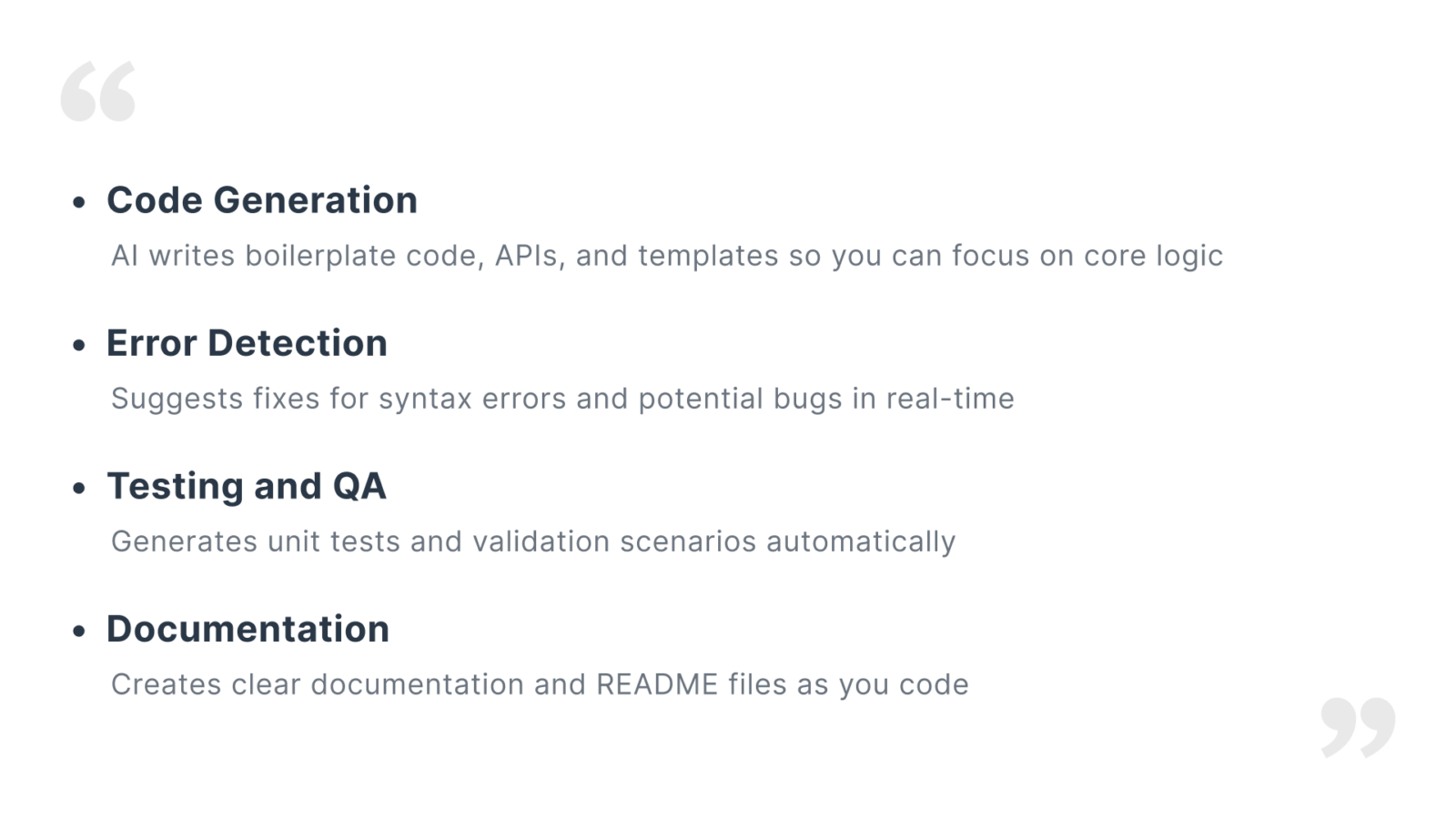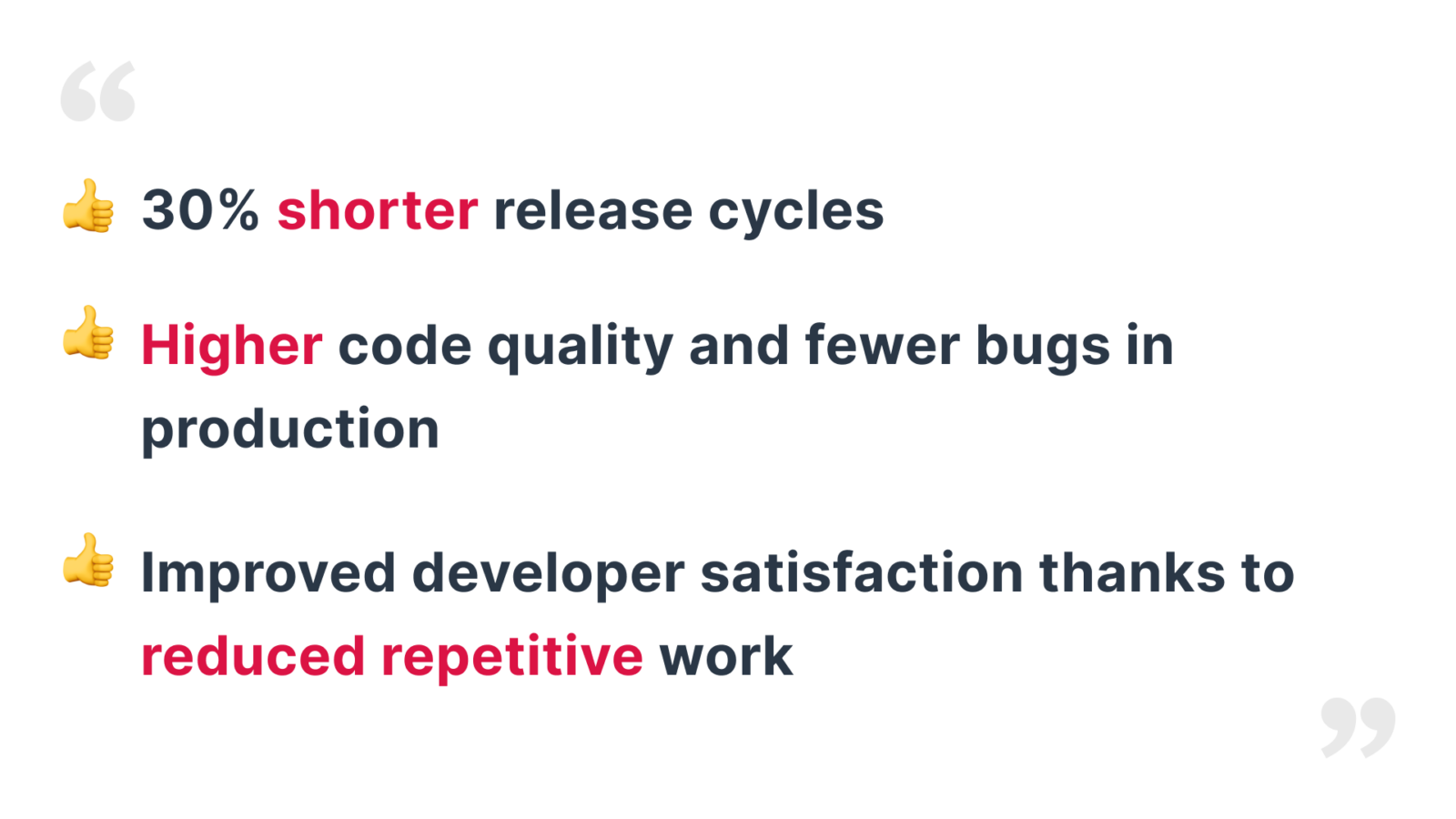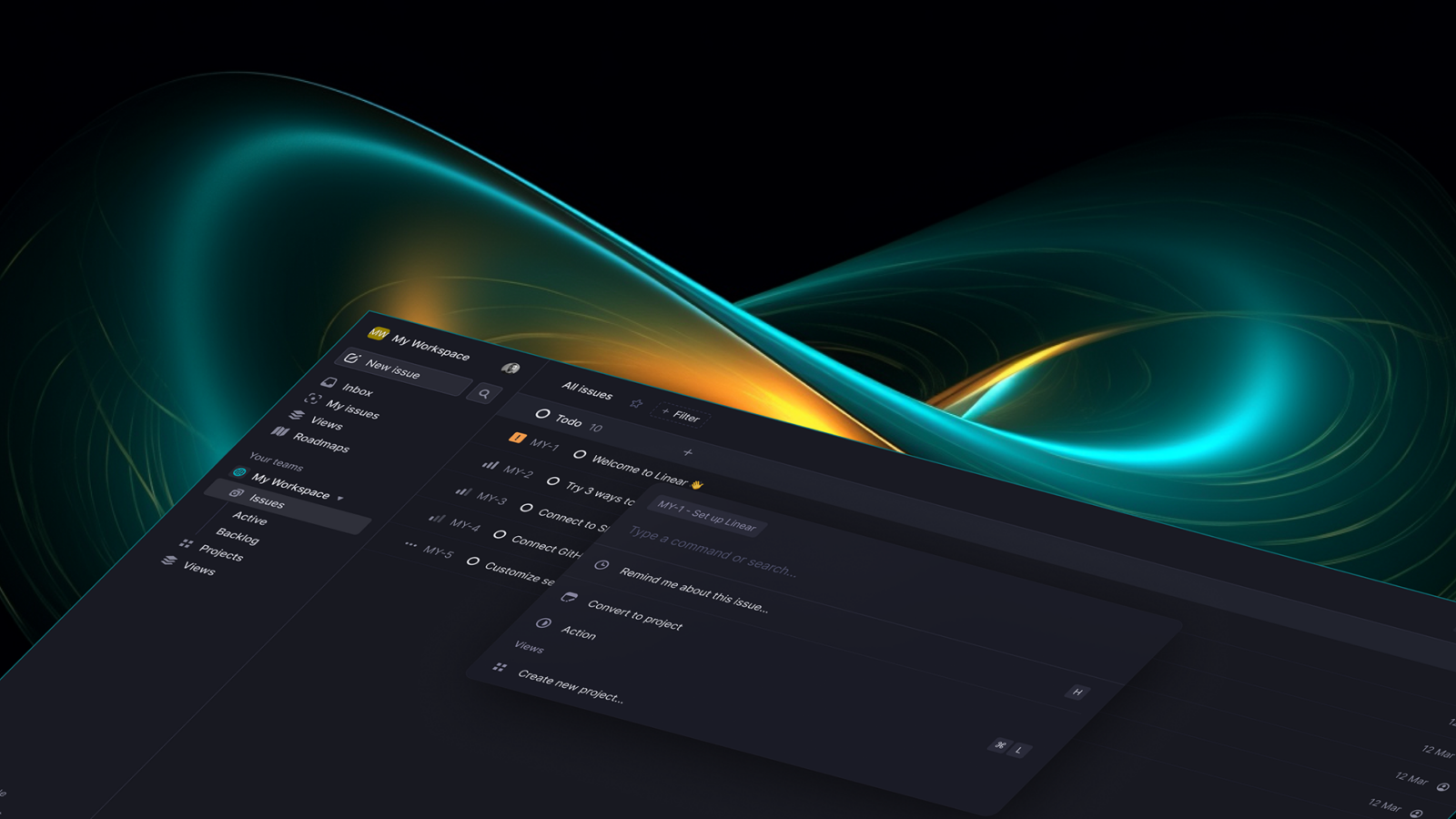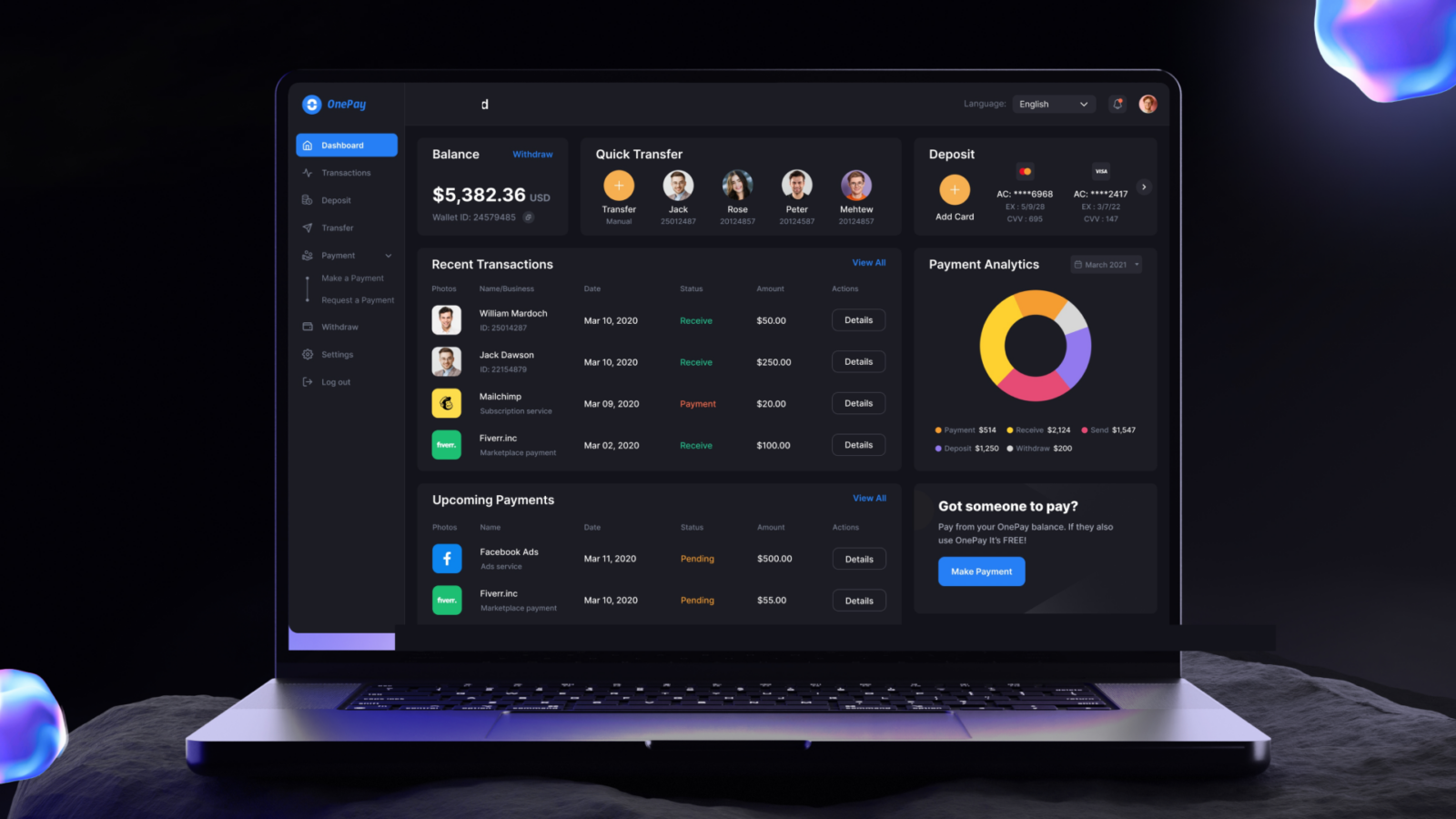Why traditional development no longer works

Software development is moving faster than ever. Businesses expect new features, quick releases, and flawless user experiences – all at the same time. But traditional development workflows often slow things down. Writing boilerplate code, fixing bugs, creating tests, and updating documentation takes hours or even days.
This is where AI-assisted development changes the game. Instead of replacing developers, AI tools like GitHub Copilot, ChatGPT, and Amazon CodeWhisperer work as powerful assistants. They help developers write code faster, detect issues earlier, and automate repetitive tasks.
The result? Development teams can deliver projects up to 30% faster while improving code quality. In this article, we’ll explain why AI-assisted developers are becoming the new standard, what tools they use, and how this approach can boost your business efficiency.
What is AI-Assisted Development?
AI-assisted development is a modern approach to software engineering where developers use artificial intelligence tools to speed up their work, improve code quality, and reduce manual effort. It doesn’t replace developers. Instead, it acts as a smart helper that automates repetitive tasks and provides real-time recommendations.
Think of it as having an expert sitting next to you, suggesting solutions and fixing mistakes instantly. Tools like GitHub Copilot, ChatGPT, Tabnine, and CodeWhisperer can generate code snippets, write unit tests, and even help with debugging.
Key features of AI-assisted development include:

Unlike traditional automation tools, AI learns from context. It understands the codebase, project structure, and even coding style, which means its suggestions are relevant and accurate.
Why AI-Enhanced Developers Work 30% Faster
The biggest advantage of AI-assisted development is speed without sacrificing quality. While traditional development workflows often get stuck on repetitive coding tasks, AI eliminates these bottlenecks. Here’s how:
Faster Coding
Copilot or Tabnine can generate entire code blocks from just a few lines of instructions. Need a REST API controller? A database query? Or a validation function? AI can create it in seconds, reducing hours of manual work.
- Boilerplate code generation saves 20–25% of development time.
- Context-aware suggestions help developers focus on logic instead of syntax.
Smarter Testing
Testing is one of the most time-consuming phases in development. AI changes that by automatically generating unit tests and test cases based on your code structure. Some tools can even predict edge cases and suggest improvements.
- Auto-generated unit tests reduce manual QA effort by up to 40%.
- Continuous test updates mean fewer regressions and faster CI/CD pipelines.
Quick Debugging
Fixing bugs often requires hours of digging through logs. AI accelerates this process by identifying root causes and suggesting possible fixes in real time. Combined with automated code review, it prevents bugs from reaching production.
- AI-assisted debugging cuts issue resolution time by 20–30%.
- Inline suggestions help maintain high code quality without extra review cycles.
All these factors combined lead to significant efficiency gains. On average, teams using AI-assisted development report:

When developers spend less time on routine and more on innovation, businesses deliver better products faster, and gain a real competitive edge.
Key Use Cases for AI in Development
AI-assisted development is not just about writing code faster, it covers multiple stages of the software lifecycle. Here are the most impactful use cases where AI makes a real difference:
1. Boilerplate Code and API Integration
Developers often spend hours writing repetitive code like CRUD operations, API controllers, and configuration files. AI can handle this instantly. For example, a simple prompt like “Create a REST API endpoint for user authentication with JWT” can generate a working solution in seconds.
Impact:
- Speeds up initial development phases by up to 50%.
- Reduces human error in repetitive coding tasks.
2. SQL Optimization and Data Queries
Database queries are critical for performance, but writing optimized SQL often requires expertise. AI tools can generate efficient queries, suggest indexes, and even identify performance bottlenecks.
Impact:
- Cuts query-writing time by 30–40%.
- Improves database performance without manual tuning.
3. Automated Test Generation
Writing unit tests and integration tests is a must, but it’s also time-consuming. AI can create tests based on your code structure and even recommend edge cases you might overlook.
Impact:
- Reduces manual QA work by 40%.
- Improves test coverage and system reliability.
4. Documentation and ReadMe Files
Nobody loves writing documentation, but it’s essential for onboarding and maintenance. AI can automatically generate clear, well-structured documentation as you code, saving time and effort.
Impact:
- Builds up-to-date docs with minimal developer involvement.
- Speeds up team onboarding and knowledge sharing.
5. Code Review and Best Practices
AI doesn’t just write code; it reviews it. Advanced tools highlight potential security issues, performance problems, and deviations from coding standards before you even commit.
Impact:
- Reduces technical debt early.
- Improves security and compliance from day one.
With these use cases, it’s clear that AI-assisted development is more than just a trend. It’s a game-changer for productivity, quality, and time-to-market.
Real-World Examples and Mini Case Studies
Below are two mini-case studies taken from Valletta Software’s success stories, showcasing how AI-assisted development delivers real value:
Case Study 1: AI Integration for Software Development Optimization
Valletta Software integrated AI directly into their development workflow to automate repetitive tasks from requirement analysis to code generation and testing.

- AI-generated technical specs and user stories reduced time-to-spec and backlog creation by 40–60%.
- Automated code and test generation allowed teams to focus on core features, improving output quality.
- A human-in-the-loop process ensured AI suggestions were reviewed, maintaining accuracy and project alignment.
Result:
- Requirements clarified faster, specs and prototypes ready within days instead of weeks.
- Startups delivered MVPs in under a month – over 50% faster than traditional timelines.
Case Study 2: AI-Powered Fraud Detection System
For a European payment provider, Valletta Software implemented a real-time, AI-powered fraud detection platform using Python, XGBoost, TensorFlow, AWS Lambda, and Kafka.

- AI analyzed live transaction streams and instantly flagged fraudulent behavior. No backlog, sub-second response.
- Reduced fraud losses by 60% and chargeback rates by 40% within 6 months.
- The robust system processed over 12 million transactions and passed compliance audits.
The Future: AI as a Standard in Development Teams
AI-assisted development is no longer an experiment; it’s becoming the industry standard. Businesses in every sector are adopting AI to accelerate delivery, improve quality, and cut operational costs. Over the next few years, AI will be as common in software teams as Git or CI/CD pipelines.
But here’s an important truth: AI will never replace developers. It’s a tool, not a creator. AI can generate snippets, write tests, and optimize code, but it cannot design a product, understand business goals, or make critical architectural decisions. The creativity, judgment, and problem-solving of human engineers remain irreplaceable.
Why AI is a partner, not a replacement
- AI accelerates, developers innovate: AI takes care of repetitive coding so developers can focus on building meaningful features.
- AI lacks context and vision: It can suggest solutions, but humans decide what fits business strategy.
- AI needs supervision: Without human review, AI code can introduce risks, bugs, and compliance issues.
Why now is the right time
- Competitive Advantage: Companies using AI deliver faster and at lower cost, gaining an edge over those sticking to traditional workflows.
- Talent Gap Solution: Skilled developers are scarce. AI bridges the gap by automating routine tasks, boosting productivity per engineer.
- Future-Proofing: Teams that adopt AI today will be ready for upcoming innovations like predictive analytics and fully automated testing.
What will change
- Developers become architects: Less manual coding, more system design and strategy.
- Quality improves: AI-supported reviews catch errors early, reducing security and performance issues.
- Delivery accelerates: With AI in CI/CD, releases become faster and safer.
AI is not here to replace developers. It’s here to make them faster, smarter, and more effective than ever before. Teams that embrace this partnership today will lead the market tomorrow. They deliver software up to 30% faster, improve quality, and reduce costs without sacrificing creativity or control.
If you want to:
✅ Shorten release cycles without compromising quality
✅ Reduce repetitive tasks and free your developers for innovation
✅ Build scalable, future-ready systems with AI support
We’re here to help. Our AI-empowered developers combine deep technical expertise with cutting-edge tools to turn your vision into reality. Faster, smarter, and better.